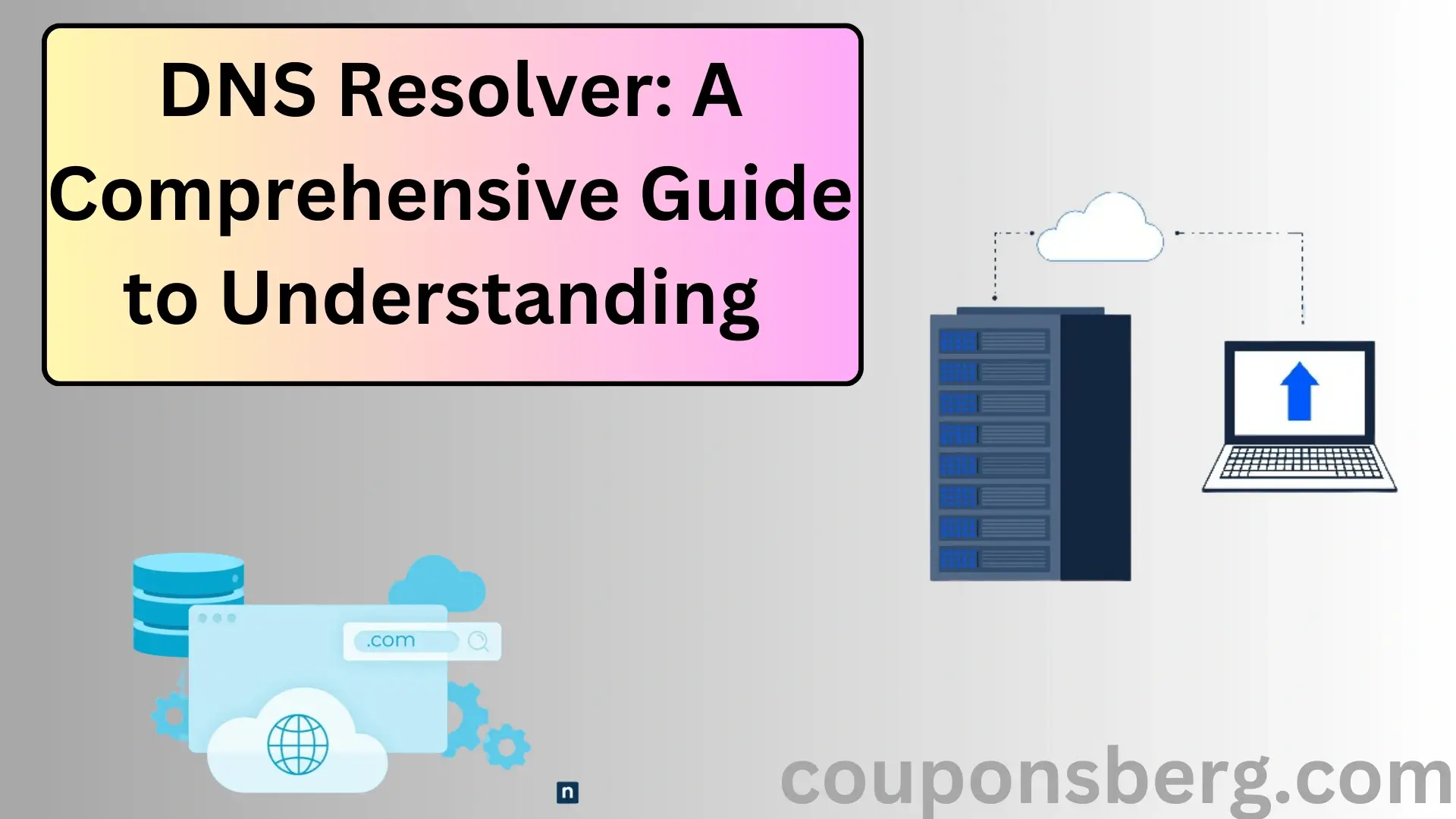DNS Resolver: Because they fill in the gap between machine-readable IP addresses and human-readable domain names, DNS resolvers are essential to the internet’s seamless functioning. By being aware of their sorts, functionality, and accessible security measures, you may maximise your online privacy and browsing experience.
Enhance your online experience and guarantee a safer browsing environment by choosing the best DNS resolver, setting it up correctly, and keeping up with the newest DNS technology advancements.
Internet navigation greatly depends on the invisible workings of DNS resolvers. These crucial elements of the Domain Name System enable email delivery and smooth web browsing by converting human-readable domain names into numerical IP addresses that computers can comprehend.
In this extensive book, we’ll delve into the nuances of DNS resolvers, their different varieties, their operation, and their vital role in Internet traffic control.
You will have the knowledge necessary to improve your DNS resolver configurations and your internet experience in general by the time you finish reading this article.
What is a DNS resolver?

A DNS resolver is a piece of software that converts domain names into IP addresses. It is sometimes referred to as a DNS client, a DNS lookup tool, or a DNS resolution engine.
A DNS resolver starts the process of determining the associated IP address for the domain name when you type a URL into your browser or send an email.
Users no longer need to memorise numerical IP addresses in order to send emails or access websites, thanks to this translation process.
Types of DNS Resolvers

There are several varieties of DNS resolvers, and each has unique applications and features.
| Types of DNS Resolver | Description |
|---|---|
| Recursive Resolver | Starts DNS query processing on behalf of customers and gives them the IP address as the response. |
| Iterative Resolver | Caches previously answered DNS information to speed up response times for incoming queries. |
| Stub Resolver | Operates on end-user hardware and leaves the real DNS resolution to recursive or iterative resolvers. |
Recursive Resolvers
On behalf of clients (web browsers, email clients, etc.), these resolvers start the DNS query process and are in charge of giving the client the final response (IP address).
They are a crucial part of the DNS architecture since they interact with several DNS servers throughout the resolution process.
Iterative Resolvers
Iterative resolvers, also referred to as caching resolvers, enhance response times for incoming requests by caching previously resolved DNS information in a cache.
In contrast to recursive resolvers, they communicate with other DNS servers to obtain the requested data and, at each stage, return the best response they have, enabling the client to proceed with the resolution process if needed.
Stub Resolvers
Recursive or iterative resolvers conduct the DNS resolution process for these lightweight resolvers, which are installed on end-user devices like PCs and cellphones.
Stub resolvers are a minimum method to DNS resolution because they only interact with the designated DNS resolver that is set up on the device.
Caching Resolvers
In order to speed up response times for future requests, these resolvers cache recently resolved DNS data. The way they are implemented determines whether they are iterative or recursive.
How DNS Resolvers Work

In both the DNS query and answer operations, the DNS resolver is essential.
DNS Query Process
The DNS resolver starts the query process by getting in touch with the relevant DNS servers, first the root servers, then the top-level domain (TLD) servers, and lastly the authoritative name servers for the domain, when a client (such as a web browser) asks the IP address for a domain name. The procedure refines the search for the right IP address at each stage.
DNS Response Process
Upon receiving the IP address from the authoritative name server, the DNS resolver provides the client with the information so they can send an email or access the desired website. In order to speed up response times for subsequent requests, the resolver further keeps the resolved data in its cache for a predetermined amount of time, referred to as the Time to Live (TTL).
Error Handling and Fallback Mechanisms
The DNS resolver may attempt to use a different server or deliver an error message to the client if it detects a problem during the resolution process, such as a non-existent domain or an unavailable server.
DNS Resolver Security

Because DNS resolvers are vulnerable to a variety of attacks, security precautions are crucial to preserving their integrity.
Threats to DNS Resolvers
- DNS cache poisoning: This attack entails inserting malicious material into a resolver’s cache in order to possibly intercept sensitive data or reroute users to phoney websites.
- DDoS attacks: DNS resolvers are the target of Distributed Denial of Service (DDoS) attacks, which overload them with requests and prevent them from processing valid ones.
- Attacks known as “man-in-the-middle”: These happen when a hacker eavesdrops on and modifies DNS resolver conversations, possibly leading users to harmful websites or collecting personal information.
Security Measures For DNS Resolvers
- DNS Security Extensions, or DNSSEC, is a security mechanism that guarantees the integrity and validity of DNS data by cryptographically signing it.
- DNS over TLS (DoT) and DNS over HTTPS (DoH) are two technologies that encrypt DNS requests and answers to prevent interception and manipulation.
- Rate-limiting and monitoring: By putting in place these safeguards, prospective risks like DDoS attacks and anomalous query patterns can be recognised and countered.
Choosing a DNS Resolver

Considerations for choosing a DNS resolver should include the following:
- Speed: By cutting down on the amount of time it takes to resolve domain names, a fast DNS resolver can greatly enhance your browsing experience.
- Privacy: User data may be gathered and stored by certain DNS resolver services, with the possibility of its disclosure to outside parties. Select a resolver that has a robust privacy policy to guarantee the protection of your surfing information.
- Choose a DNS resolver with strong security features, like support for DNSSEC and encrypted DNS protocols (DoH or DoT).
- Customisation and control: More experienced users might favour a DNS resolver with more adjustable settings and functionalities.
A number of well-known public DNS resolver services provide a mix of these functions:
- Google Public DNS: This well-known provider of DNSSEC validation, speed, and dependability also has a robust privacy policy.
- With an emphasis on security and privacy, Cloudflare DNS offers quick DNSSEC certification, quick resolution speeds, and support for both DoH and DoT.
- OpenDNS: Providing parental control and content filtering capabilities, OpenDNS is a well-liked option for households and companies wishing to limit access to particular kinds of content.
- Quad9: With an emphasis on privacy and security, Quad9 integrates threat intelligence feeds to prevent dangerous domains and supports DNSSEC, DoH, and DoT.
Configuring a DNS Resolver

The method for configuring a DNS resolver differs based on the hardware and operating system being used.
- Windows: To enter the necessary DNS resolver addresses, open the Network and Sharing Centre, go to the properties of your network adapter, and change the Internet Protocol Version 4 (TCP/IPv4) settings.
- macOS: Go to System Preferences, click on Network, choose the network connection that is currently active, and enter the DNS resolver addresses you want to use in the DNS tab.
- Linux: To add the desired DNS resolver addresses, modify the relevant network configuration file (such as /etc/resolv.conf or /etc/network/interfaces), depending on the distribution.
- Android: Open the Wi-Fi settings for the network you are currently connected to, change the IP settings to use static IP addresses, and then enter the DNS resolver addresses you want to use.
- iOS: Open the Wi-Fi settings for the network you are currently connected to, select Configure DNS, and enter the DNS resolver addresses you want to use in the Manual configuration option.
- Use command-line tools like nslookup or dig to test that your device is using the updated resolver settings after configuring your DNS resolver.
DNS Resolver Performance Monitoring and Optimisation

To guarantee that consumers have the best possible browsing experience and to keep your DNS infrastructure in good working order, you must keep an eye on the performance of your DNS resolver.
Key Performance Metrics
- Resolution time: A DNS resolver’s time to return the requested IP address is measured by this statistic; faster DNS resolvers have shorter response times.
- Cache hit ratio: This ratio shows what proportion of DNS queries are resolved with data from caches, and it can be used to gauge how well a resolver’s caching is working.
- Query success rate: This statistic shows the proportion of DNS queries that are answered successfully and sheds light on the correctness and dependability of the resolver.
Monitoring Tools and Solutions
- Monitoring tools built right into DNS resolvers: A lot of DNS resolvers come with built-in reporting and performance metric tracking features.
- Third-party monitoring services: External monitoring programmes, frequently with more sophisticated features and analytics, can offer more information and visibility into the operation of your DNS resolver.
Strategies For Optimizing DNS Resolver Performance
- Fine-tuning cache settings: Cache hit ratios and resolver speed can be enhanced by modifying the cache size and TTL parameters.
- Choosing the best DNS server or resolver service: You can improve your browsing experience by selecting a resolver with optimal performance features, like fast resolution times and strong dependability.
- By dividing query loads over several DNS resolvers and implementing redundancy and load balancing, one can lessen the effects of resolver failures or performance problems.
DNS Resolver Privacy Concerns and Best Practices

Privacy Issues Associated with DNS Resolvers
- Data gathering and logging: Privacy concerns may arise from certain DNS resolvers’ acquisition of user data, such as IP addresses or query logs.
- Data sharing with third parties: For a variety of uses, including analytics and advertising, resolver operators may disclose the information they have gathered to outside parties.
- Censorship and content filtering: Depending on operator policy or local laws, some DNS resolvers may filter or prohibit content, which could restrict users’ access to resources and information.
Privacy-Focused DNS Resolver Options
- Public DNS resolvers that respect users’ privacy: User privacy is prioritised by services like Cloudflare DNS and Quad9, which restrict data collection and sharing procedures.
- Managing your own DNS resolver: Although it calls for more technical know-how and resources, managing a personal DNS resolver can provide you more control over data collection and privacy settings.
Best Practices For Ensuring DNS Resolver Privacy
- Employing encrypted DNS protocols (DoH and DoT) can help shield your DNS queries from interception and manipulation.
- Examining and upgrading DNS resolver configurations on a regular basis: Make sure your resolver settings reflect your privacy preferences and are current.
- Enlightening users about privacy dangers and secure browsing techniques Urge users to adopt best practices to protect their data and to be aware of the possible privacy implications of their browsing behaviour.
Legal and Compliance Considerations for DNS Resolvers

Applicable Laws and Regulations
- Regulations governing the gathering, storing, and sharing of user data, such as the CCPA and GDPR, may be applicable to DNS resolver operators.
- Copyright and content-related laws: Some countries have the authority to impose limitations on content or mandate that DNS resolvers prevent users from accessing particular websites or resources.
Compliance Challenges For DNS Resolver Operators
- Managing the many and sometimes confusing legal requirements: DNS resolver operators might have to modify their procedures in order to abide by various laws in various places.
- Operators must strike a compromise between upholding legal obligations and safeguarding user privacy when it comes to data gathering, sharing, and content filtering.
Best Practices For Legal and Regulatory Compliance
- Examining and revising rules and procedures on a regular basis: Keep up with changing legal and regulatory requirements so that you can modify your DNS resolver operations appropriately.
- Putting in place user-friendly, transparent policies: Make sure users are aware of the data collection, sharing, and content filtering procedures used by your DNS resolver.
- Working together with legal and compliance specialists: To make sure your DNS resolver operations stay compliant, get advice from experts who are knowledgeable about the applicable rules and regulations.
DNS Resolver Troubleshooting and Common Issues
Common DNS Resolver Issues
- Sluggish resolution durations Long resolution times could be a sign of DNS infrastructure problems, network congestion, or inadequate resolver configurations.
- Inaccurate or partial DNS responses: These problems may be caused by resolver malfunctions, incorrectly configured DNS records, or cache corruption.
- Resolver unavailability: DDoS attacks, server failures, and network outages can all cause this issue.
Troubleshooting Tools and Techniques
- Command-line utilities (such as dig, traceroute, and nslookup): By offering comprehensive details about DNS queries and responses, these programmes can aid in the diagnosis of DNS resolver problems.
- Tools for network monitoring and diagnosis: Applications such as Wireshark and tcpdump can record network traffic and reveal information about DNS resolver performance and any problems.
- Log analysis and error reporting: Patterns or errors that might be causing issues can be found by looking through DNS resolver logs.
Best Practices For Resolving DNS Resolver Issues
- Put failover and redundancy procedures in place: Install many DNS resolvers and set them up to respond to queries in the event of malfunctions or poor performance.
- Monitor and improve resolver performance on a regular basis. Take proactive measures to detect and resolve such problems in order to reduce the impact they may have on consumers.
- Consult specialists or the resolver operator for assistance. If you’re still having trouble fixing a problem, seek advice from experts or get in touch with the solver’s support staff.
Future of DNS Resolvers
Emerging Trends and Technologies
- Continuous deployment of encrypted DNS protocols (DoH, DoT): As privacy concerns increase, it is anticipated that encrypted DNS protocols will be used in more DNS resolver implementations.
- Security improvements for DNS resolvers: Constant study and development in DNS security solutions will assist in addressing the changing threat landscape and shielding users from malevolent parties.
- Decentralised and blockchain-based DNS solutions: When compared to conventional DNS infrastructure, these cutting-edge methods of DNS resolution may provide more security, privacy, and dependability.
Challenges and Opportunities
Performance, security, and privacy must all be balanced. As DNS resolvers advance, operators must continue to look for methods to maximise efficiency while preserving user security and privacy.
Managing legal and regulatory complexity: DNS resolver operators need to modify their procedures and guidelines to guarantee compliance with the many laws and regulations that apply in different places.
Promoting recommended practices and educating users: As DNS technology evolves, it’s critical to warn consumers of potential dangers and urge them to adopt secure browsing practices.
GET MORE INFORMATION VISIT ON……………Couponsberg.com
